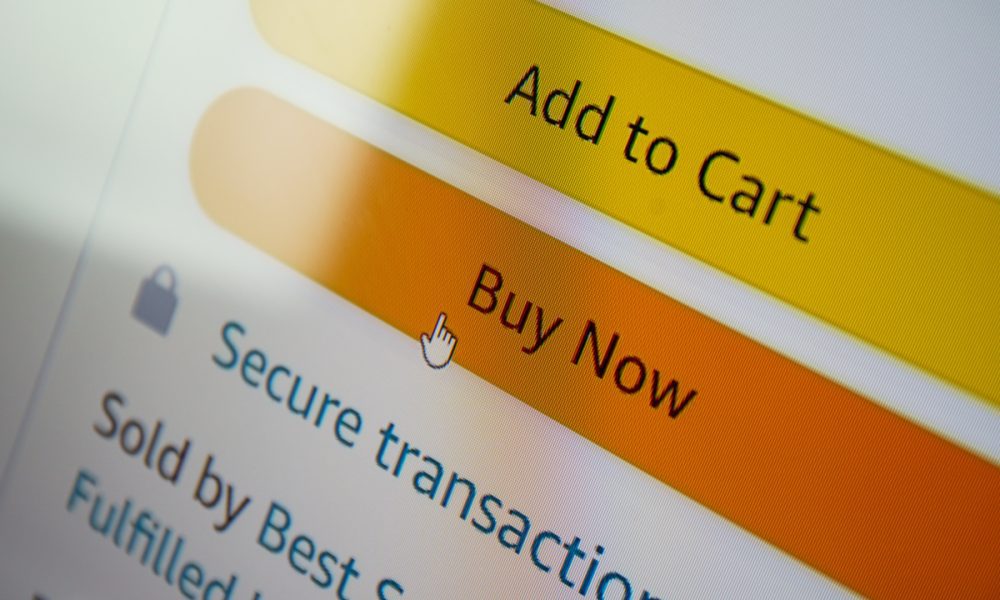Like the Holy Grail or unicorns (the mythical creature, not high valuation startups), one-click buy button functionality is the long-sought magic solution to unlocking billions of dollars in eCommerce transactions held back by friction in the checkout process.
A lot of progress has been made by retailers and payments companies, including Amazon, PayPal and Shopify, to help clear this last-step hurdle. Consumer expectations have been shaped by pandemic-era digital commerce, and they are demanding a universal one-click checkout experience.
Among FinTechs making great strides along these lines is Bolt, which takes a channel- and ecosystem-agnostic approach to one-click checkout that, as Bolt CEO Maju Kuruvilla told PYMNTS’ Karen Webster, represents the next evolution in simple, anywhere checkout.
“People are buying at the point of inspiration,” Kuruvilla said. “People like to buy things online and they don’t want to be constrained with a lot of steps. We have to simplify that and provide a very simple, one-click checkout that works across all the different brands and all the different surfaces. So the future of checkout is the ability to buy things with one click, pretty much everywhere on the internet.”
Webster pointed out that many see existing buy buttons as doing that, but Kuruvilla countered that the current solutions are in effect hardwired to certain platforms and marketplace ecosystems, and that does nothing to make one-click available to shoppers wherever they are.
Calling Amazon’s buy button a “commerce 1.0” innovation, he said, “then Shopify came up with the commerce 2.0 evolution, saying that every brand can have their own site and create their own experience online, which is great — other than it only works if you are vertically integrated within the Shopify ecosystem.”
What’s more, merchants tend to outgrow Shopify over time. He said that leaves midsized and large merchants two choices: either build your own — a process that he noted “took Amazon decades to build” — or partner with a one-click specialist like Bolt, whose solution is meant to work on any site, invisibly, in gray-label fashion.
See also: BigCommerce, Bolt Partner on One-Click Checkout
Too Many Steps
PayPal comes the closest to providing ubiquitous buy button functionality, but it typically coexists with a half-dozen other checkout payment options, and that’s not helping.
Kuruvilla said, “You’re seeing that with PayPal and a lot of different alternate payment methods, including all the buy now, pay later buttons, there are too many buttons on merchant’s site.
“Do we want to add more buttons? That’s one more friction we are adding for a consumer. What if we can provide convenient one-click checkout natively integrated into the merchant’s core workflow?”
Arising from its Bolt SSO Commerce™ single sign-on checkout solution introduced in 2021 and debuting with clients including Badgley Mischka, Kuruvilla said the point is bringing retailers closer to their customers via the data insights derived from native one-click checkout.
Kuruvilla told Webster that when merchants use buy button intermediaries like PayPal, “the merchant has very limited information of that shopper. Converting a lot of their shoppers into an account holder and knowing about them is of critical importance for all merchants today, especially with the behavioral change we are seeing.”
In that setup, merchants create direct connections with consumer. Once a consumer logs in via email or phone number and receives a One Time PIN (OTP), they’re logged into the entire network of merchants and brands using Bolt.
“We go and look and find have they shopped anywhere on the network on any other merchant, and if they have, we have the information, we immediately give them a one-click checkout experience,” he said.
“That’s the convenience we need in the future,” he added. “The burden of identifying the shopper should be on the merchant, not on the consumer, and Bolt is simplifying that.”
Noting that checkout is so difficult to solve because it’s where identity, payments credentials, merchandise and shipping instructions all must be processed effectively as a package, he said, “That’s the reason why Bolt is the only product in the market that can really replace the native checkout. Everybody else will be a separate button because adding a separate button is not as hard as replacing the core checkout of merchant.”
See also: Commerce Identity, Checkout Operating System Makes One-Click Checkout Ubiquitous
Unifying the Checkout Workflow
By doing authentication at the device level, Kuruvilla believes Bolt’s use of email address or phone number and OTP is an effective defense against fraudulent activity.
Saying that historically, fraud firms focused on their function, payments providers on theirs and retailers focused on merchandise and fulfillment, it has injected more friction into a process that now insists on less.
Kuruvilla said Bolt is “fundamentally bringing all these three together. That’s why identity matters. The shopper identity comes together, we store the payment information and enable all different payment options for the identity on the accounts. We are connected with fraud systems behind the scenes so we can manage it end to end.”
“Merchants want to know and need to know who their shoppers are so they can tell their story,” he noted. And given the consumer quest for simplicity and something to replace the dozen passwords we can never remember, he added, “Imagine you don’t need to worry about any of that and we make it easily available with one click.
“When you use Bolt, you are getting an account on a merchant site if you want, and you are buying things with one click, it all comes together at the same place. It’s the universal identity for commerce.”
Firmly established as an eCommerce solution, Bolt is now working with physical retailers to migrate its form of passwordless one-click checkout to the in-store environment.
This will take the form of “simple things like buy online and pick up from store … scenarios where merchants who are omnichannel need to take advantage of that,” he said. “They have an edge over merchants who don’t have multiple channels. How do you leverage that?”
He noted Bolt’s work with one brick-and-mortar retail client on an “endless aisle experience” where, if an item is out of stock in-store, the consumer can scan a barcode and the merchant ships the item when it becomes available.
In that kind of scenario as online, payment happens invisibly, and that’s the endgame.
“Authenticating the user at the very beginning and making payment — not something anybody needs to select or think through and automating that — is the future,” he said.
“It’s the same in a lot of ways in eCommerce as well as the physical store. It is a clean experience with a credit card [for example]. That is a tough one to beat. But on eCommerce, there is a lot of work to be done” to make one-click checkout an anywhere reality.







